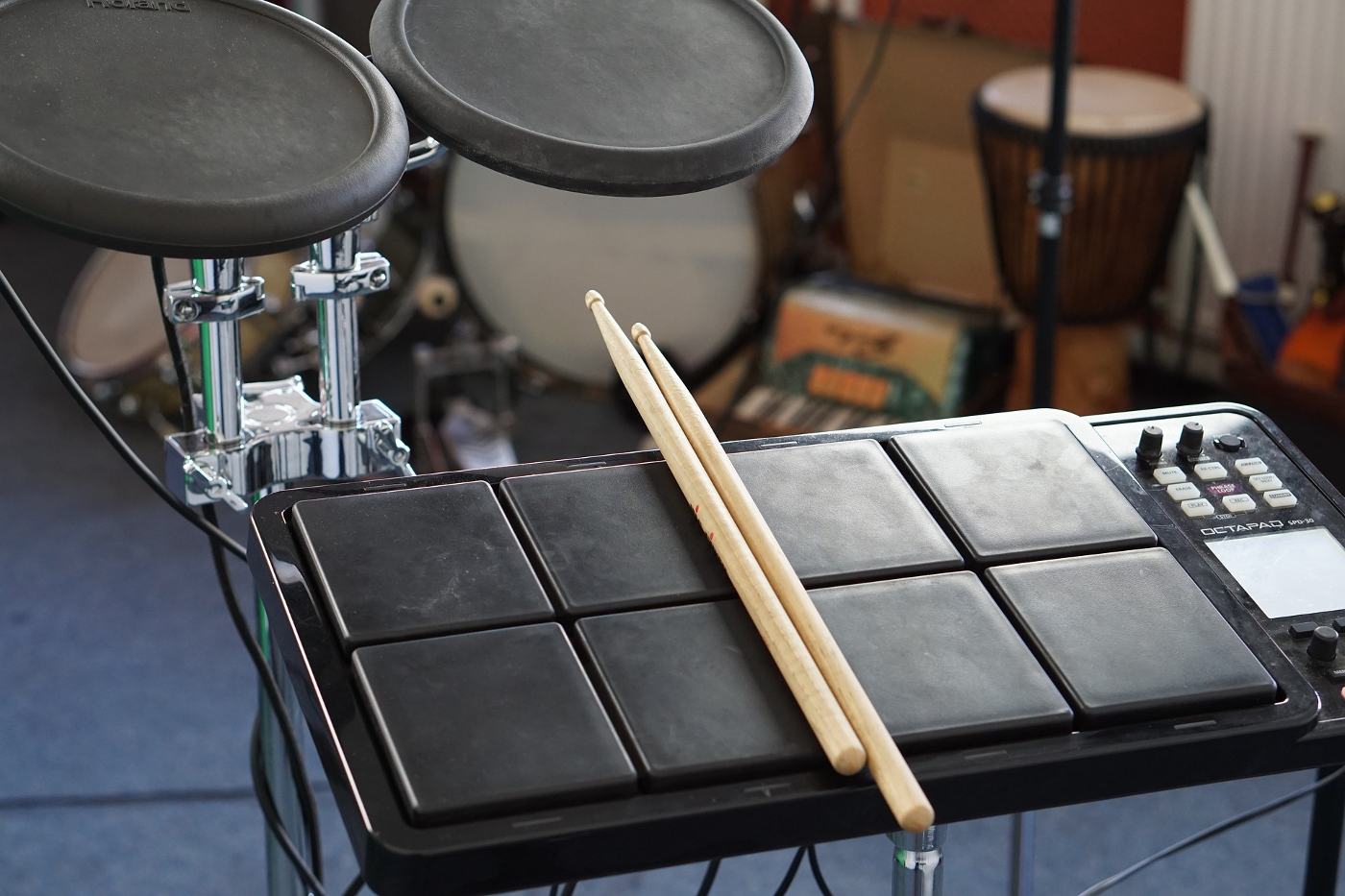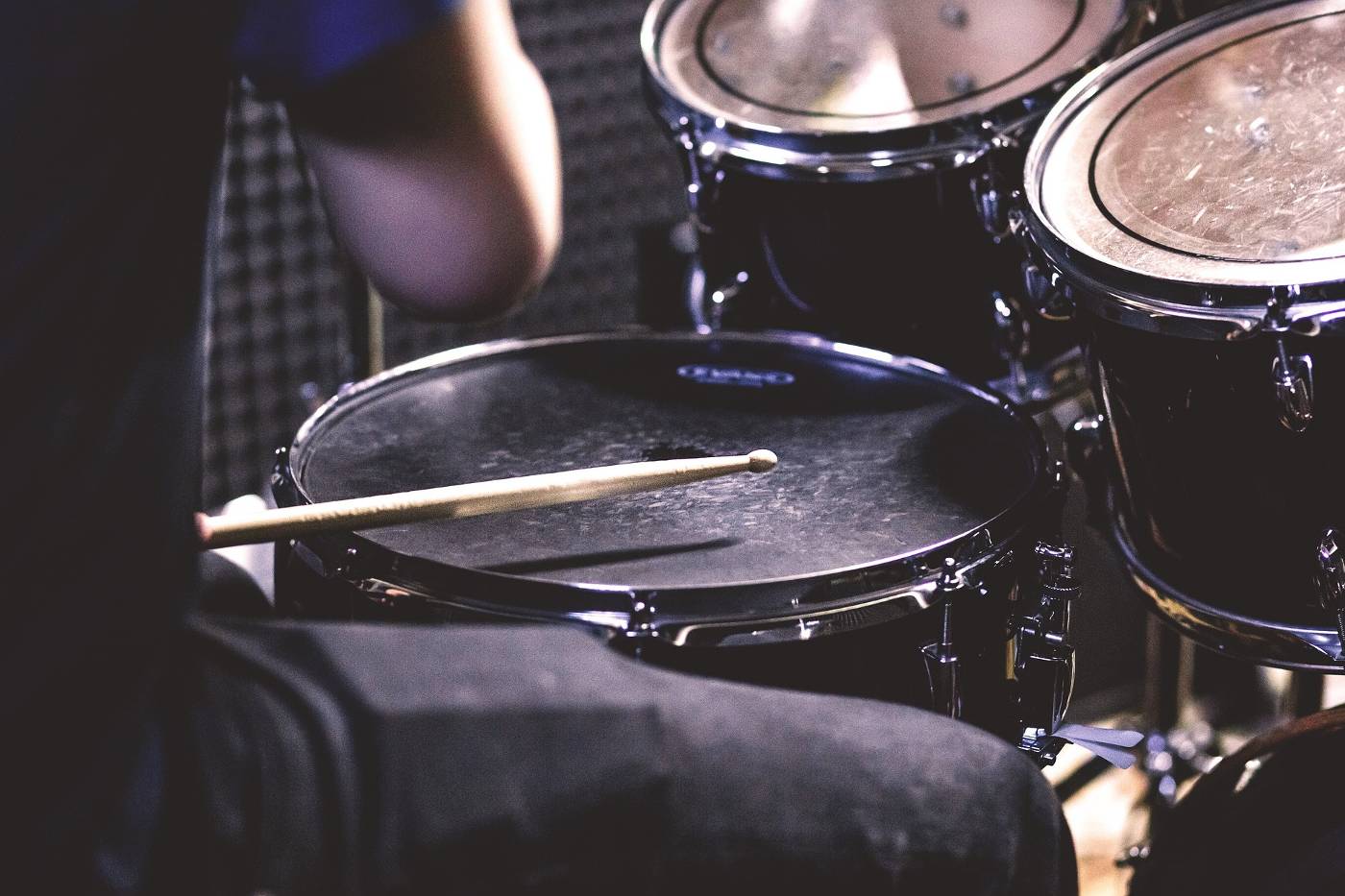Drums are a fun and popular instrument—they allow you to express yourself, and virtually anyone can learn to play them. Alongside this, drumming comes with an array of health benefits, such as improved co-ordination.
However, whether you live in an apartment, share a house with family or friends, or live in your own home, you’re probably aware that drumming makes lots of noise. To avoid getting into hot water with your friends, family, and neighbours, you’ll need to know everything possible about soundproofing for drums before you start to play.
The good news is, this guide’s here to help! Read on below for all the information you need.
Disclosure: This page contains affiliate links. As an Amazon Associate, we earn a commission from qualifying purchases.
Creating Your Soundproof Drumming Space
Soundproofing a room for drums is easier than you might think, and most people will be able to complete the job independently. Nonetheless, unless you plan on spending a lot of money on soundproofing, you’ll have to accept that some noise is likely to be heard outside the room. The key, when soundproofing your room for drums, is to get the noise down to an acceptable level for others in your house and your neighbours.
The issue with drums is that they create noise that’s carried through the air and vibrations that can move through the solid surfaces of a house. You’ll need to block the sound and vibrations to prevent others from being disturbed by your noise.
If you’re disturbing everyone, this will seriously affect your ability to practice. To solve this problem before you even start, though, here are six top tips that relate to DIY soundproofing for drums.
Choose Your Space Carefully
The first step is choosing your drumming space, if you haven’t already done so. The best option is a room without windows, which is one reason why soundproofing a basement for drums is often a good option. The main concern there will be soundproofing the ceiling.
Soundproofing your garage for drums can also be a good choice. This will likely be a little trickier than soundproofing your basement, but on the positive side, your garage is probably located further from any living spaces that need to be kept quiet.
You’ll have to consider how much space your drum kit takes up and whether anyone else will be using your chosen space. Ideally, you should choose a room with as little clutter as possible. When looking at the size of the room, you must remember that soundproofing materials are most effective when thick. That means you’ll lose some of the space in the room during the soundproofing process, and you should account for that when selecting a space.
It’s also possible to create a DIY soundproofing booth for drums. By doing this, you’ll basically be creating a room within a room. This approach effectively creates an air cushion between the drumming space and the rest of the property.
Seal the Doors and Windows
Sound travels via the air, so in order to effectively soundproof a room, you’ll need to prevent as much air as possible from leaving the room. The first place to look is your doors and windows, as these are likely to have small gaps around the frame.
Turn off the light in your drum room and make sure the lights directly outside the room are on. If you look carefully around your doors and windows, you’ll see some light shining through the gaps that need to be filled.
Medium-density fibreboard is a good sealing option, and you can also add sheets of MDF to your door to reduce the amount of sound that travels through it.
Close the Air Vents
Sound will also escape through any air vents in your room. The simplest approach to stopping this is covering each vent with sound insulation material. However, this may mean you have no airflow, which could make the room unpleasant to drum in.
Instead, consider lining the inside of each vent with soundproofing material. This will reduce airflow and the majority of the sound that exits your room while still allowing some air to move around.
Ideally, add the materials to the vent in a pattern that creates a zigzag channel for the air. It’ll make the sound bounce more, thereby reducing its volume more quickly.
Add Sound Insulation to the Walls and Ceiling
You probably already know that sound can travel through walls, especially if your room has stud walls. The best way to insulate your walls and prevent sound from escaping is to use multiple sheets of drywall.
Add one to your existing walls, and then cover the wall in soundproof sealant before adding a second layer of drywall. This eliminates all air space between the layers and makes it impossible for sound to be carried outside of your drum room.
After you’ve added two sheets of drywall, test the effectiveness and then add more if required.
If your drumming space is on a lower floor, you’ll also want to soundproof the ceiling. You can layer it with drywall in the same way as the walls.
Drywall offers effective yet cheap soundproofing for drums, but it may create an echo in your space. To create the best possible soundproofing room for drums, you can also add dedicated sound-absorbing materials to the insides of your walls. These include insulated curtains, soundproof blankets and even acoustic foam panels.
Place Vibration Mats on the Floor
If you’re looking at soundproofing for drums in basement areas, you may decide the floor doesn’t need any soundproofing. On the other hand, if there are any rooms below your drum room, the noise and vibrations of your practice sessions will carry.
The best way to prevent vibrations from travelling through flooring is to add soundproofing mats. The thicker the mats, the more effective they’ll be. Acoustic underlay or foam rubber padding are generally good options, as are anti-vibration mats.
Consider Using Bass Traps
You can purchase dedicated bass traps that are made of foam and can be added to the corners of your drumming room. They’ve been designed to absorb low frequencies and are surprisingly effective at preventing noise from travelling.
The 5 Best Products for Soundproofing

When you’re trying to eliminate drum noise from the rest of the house, it’s a good idea to invest in the best products that are available. Here are a few of our top picks that you should consider trying.
The Best Soundproofing for Drums (Overall)
Drywall with soundproof sealant is effective at trapping most sounds. Soft furniture against the wall can also help, but the best soundproofing for drums material is mass-loaded vinyl. It can be installed on walls, ceilings and even floors.
The Noise Grabber mass-loaded vinyl comes in a variety of sizes, ranging from 1 to 520 square feet. It’s easy to cut to size, is odour free and has a 32 Sound Transmission Class (STC) rating. It’s 0.25 inches thick and is available in different weights, ranging from 0.5 to 2 pounds. The heavier the product, the better it is at soundproofing.
Mass-loaded vinyl can be taped, stuck, screwed or simply hung on walls and ceilings to help soundproof your room.
The Best Soundproofing Panels for Drums
If you want to add soundproofing panels to your walls and ceilings, you should choose acoustic foam panels, which are made of soft foam. One of the best types is Auralex Acoustics Studiofoam. It’s 2 inches thick, has a 0.80 Noise Reduction Coefficient (NRC) rating and is surprisingly cost-effective.
One side is smooth, allowing the panels to be attached to the walls without air gaps. The other side resembles many small pyramids or large grooves, and should face into the drum room. The pyramid shapes absorb the sound waves and prevent them from hitting the walls or ceilings.
The Best Pad For Soundproofing Floor Beneath Electronic Drums
Electronic drums are quieter than acoustic drums. In general, there will be a soft thud with each hit, but that doesn’t mean that no sound will travel.
When looking at drum soundproofing for electronic drums, one of the best options is the Sorbothane vibration isolation pad. It’s 0.5 inches thick, circular and has a diameter of 2.25 inches. There are several hardness options, and the softer the pad is, the better it’ll be at preventing sound from travelling. Each disc can block as much as 85 dB.
Another excellent option is a soundproof rug that can be positioned under the electronic drums, and the Sonic Acoustics non-slip soundproof rug mat is one of the best choices.
This mat measures 12 by 12 inches with a thickness of 0.4 inches, and it’s made from dense carpet fibres and rubber. The rubber will stick to your floor and the fibres will grip a standard rug perfectly. This soundproofing mat averages a 0.92 NRC rating.
The Best Bass Trap for a Drum Room
A bass trap is essential for reducing the amount of sound that escapes from your drum room. Bass traps can also help balance the sounds in your room.
One of the best bass traps for a drum room is the Auralex Acoustics LENRD bass trap. You can purchase these in charcoal, burgundy, or purple. Each one measures 24 by 12 by 12 inches, and the traps come in packs of two, four or eight. They can be easily placed in all the corners of your room and will absorb bass sounds as low as 63 Hz. The NRC rating for these bass traps is 1.5.
Frequently Asked Questions (FAQ)
After thinking about soundproofing your drum room, you’ll inevitably have some questions. The following are the most commonly asked ones.
Is Rtech 7.7 2-Inch Foam Good Soundproofing For Drums?
Yes and no! Two-inch foam is good at absorbing sounds, and besides, Rtech has a good reputation and generally creates high-quality products. You can happily coat your walls and ceiling with this.
You’ll probably still want a good quality soundproof underlay and bass traps in addition to the foam, though.
What Is an NRC Rating?
Many soundproofing products will have an NRC rating. NRC stands for Noise Reduction Coefficient, and the rating is defined on a scale of 0 to 1. The closer the rating is to 1, the better the product will be at blocking sounds. It should be noted that NRC ratings only apply to sound frequencies of 250 Hz, 500 Hz, 1, 000 Hz and 2,000 Hz. They can’t be realistically applied to frequencies lower than this.
While a rating of 1 means the product will absorb all sound, this doesn’t mean it’s the best option for soundproofing your drum room. A product with an NRC of 0.5 will absorb half the sound in the room, but it’ll also reflect half of it back.
In other words, having a rating below 1 is generally a good idea. You’ll get great noise reduction while also maintaining balance in your music. In addition, when looking at soundproofing for drums, it’s best to choose materials with an NRC of 0.65 or higher.
Remember, this is noise absorption that we’re considering. Two products with the same NRC can offer different levels of soundproofing.
Why Is STC Relevant?
Some product descriptions will talk about STC, which stands for Sound Transmission Class and is a way of defining how much sound will be transmitted from one room to another. The STC rating for each product is based on how many decibels of noise are removed by a specific soundproofing product.
The higher the STC rating, the better the product will be at containing your drum noise within your drum room.
What’s the Best Way to Ensure Quiet Drumming?
That depends on your budget! Choosing the right space and using plenty of soundproofing materials will do the job, but the best possible way to create a soundproof drum room is to build the drum room inside another room.
Doing so won’t just provide additional insulation from the rest of the house. It’ll give you complete control over the size of the room, how airtight it is and the products used in the room’s creation.
Start With a Minimal Approach

Overall, the best way to protect your family, friends, and neighbours from the noise of your drumming is to locate your drumming room on the bottom floor of your residence and add soundproofing to the walls.
By using a minimal approach, you’ll be able to add additional soundproofing materials until you reach the right level. Ideally, this will allow you to play your drums at any time of the day or night.

